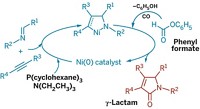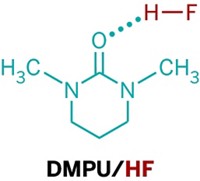Advertisement
Grab your lab coat. Let's get started
Welcome!
Welcome!
Create an account below to get 6 C&EN articles per month, receive newsletters and more - all free.
It seems this is your first time logging in online. Please enter the following information to continue.
As an ACS member you automatically get access to this site. All we need is few more details to create your reading experience.
Not you? Sign in with a different account.
Not you? Sign in with a different account.
ERROR 1
ERROR 1
ERROR 2
ERROR 2
ERROR 2
ERROR 2
ERROR 2
Password and Confirm password must match.
If you have an ACS member number, please enter it here so we can link this account to your membership. (optional)
ERROR 2
ACS values your privacy. By submitting your information, you are gaining access to C&EN and subscribing to our weekly newsletter. We use the information you provide to make your reading experience better, and we will never sell your data to third party members.
Synthesis
A promising hydrogen-storage compound
October 16, 2006
| A version of this story appeared in
Volume 84, Issue 42
Ammonia triborane (shown) is being touted as "a promising new material for chemical hydrogen-storage applications" by Larry G. Sneddon and Chang Won Yoon of the University of Pennsylvania (J. Am. Chem. Soc., DOI: 10.1021/ja064526g). The first synthesis of this triborane, reported in 1959, involved an explosive starting material. The Pennsylvania group has now found a safe, convenient way to synthesize it by oxidizing the air-stable salt Bu4N+B3H8- (Bu = butyl) with iodine in 1,2-dimethoxyethane (glyme). The resulting (glyme)B3H7 adduct is then treated with anhydrous ammonia to give the desired product, NH3B3H7, in high yield. Since Bu4N+B3H8- can be readily prepared, "the large-scale, safe synthesis of NH3B3H7 is now possible," the researchers say. They found that ammonia triborane can be rapidly hydrolyzed in aqueous solutions containing acids or metal catalysts to yield almost eight equivalents of H2. Since the reaction also forms mixtures of borates, the real utility of this hydrogen-storage system will depend on developing methods to regenerate ammonia triborane from these borates, the team notes.






Join the conversation
Contact the reporter
Submit a Letter to the Editor for publication
Engage with us on Twitter